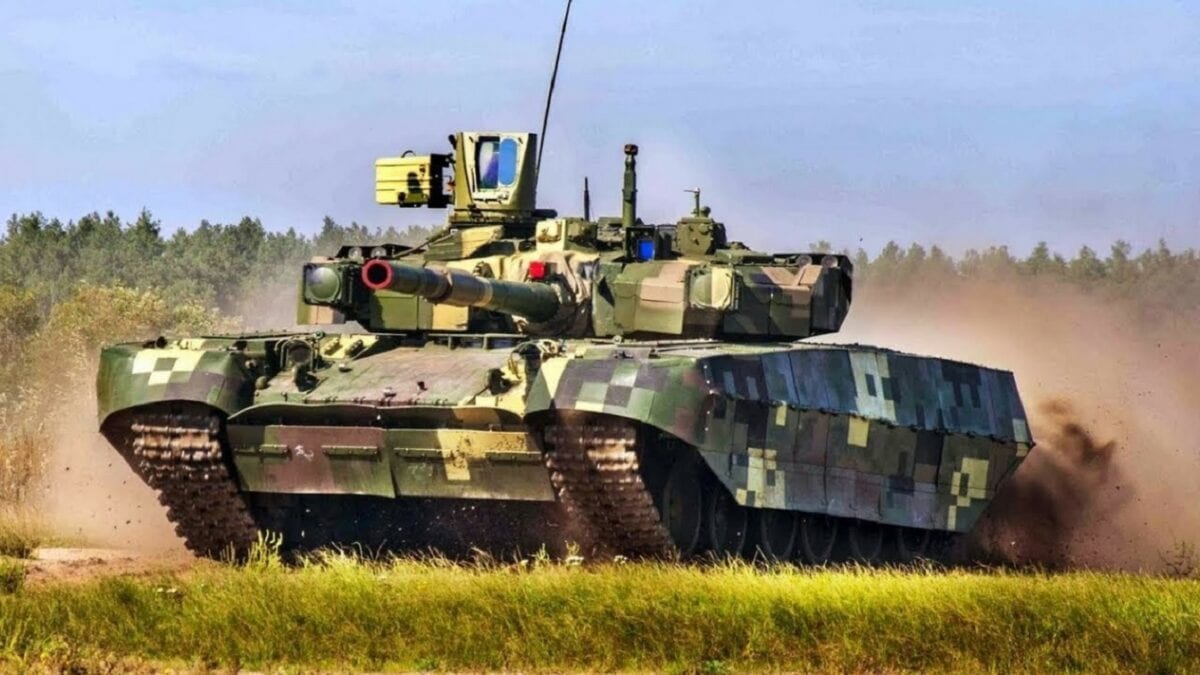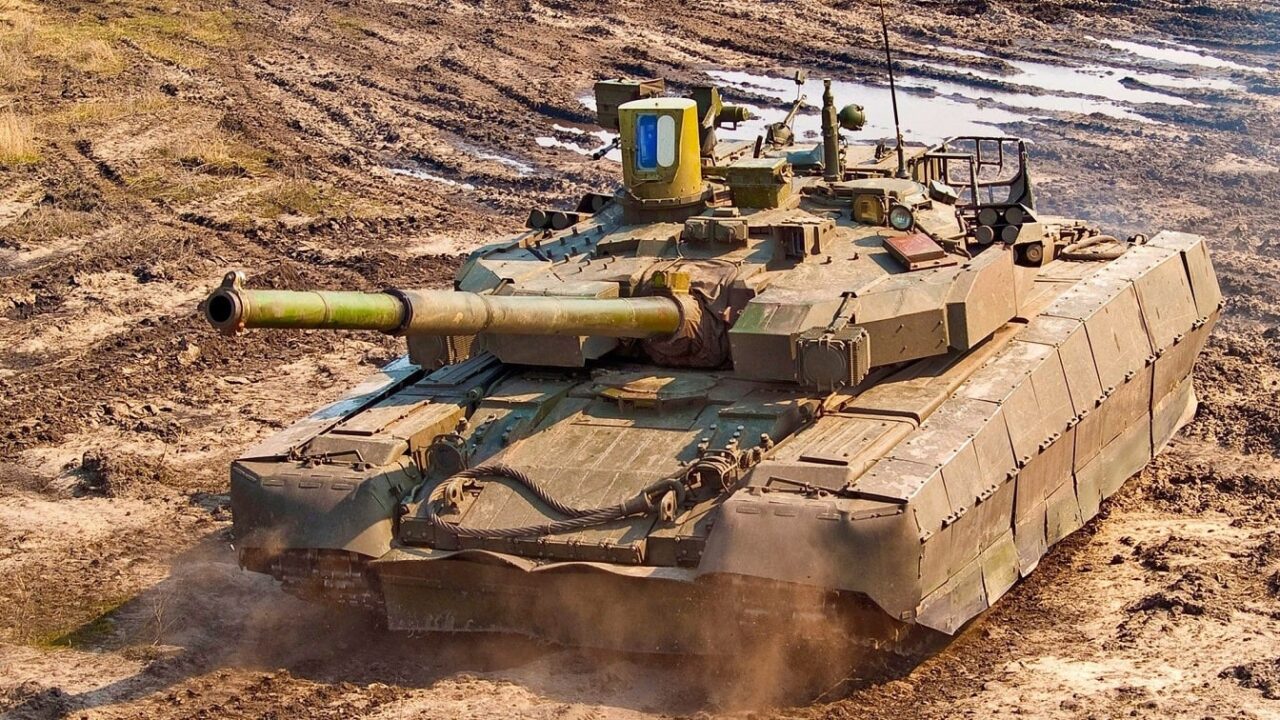Based on the Soviet T-80 tank, Ukraine’s T-84 first debuted in 1994 and entered service in 1999. Only a few of the tanks ever entered service with the Armed Forces of Ukraine – and now, those T-84s are on the front line, charged with repelling Russia’s invaders.
The T-84 was developed from the T-80’s diesel engine variant, the T-80UD. Built around a 6TD-2E opposed-piston, diesel engine, the T-84 realizes 1,200 horsepower and a power-to-weight ratio of 26 horsepower per ton. Resultantly, the T-84 is one of the world’s fastest tanks, capable of reaching on-road speeds of 43 miles per hour. In addition to diesel fuel, the 6TD-2E can also be fed jet fuel, petrol, or any mixture of diesel, jet fuel, and petrol.
Cabin Comforts
The tank is impressive at 9.7 meters long, 3.4 meters wide, and 2.8 meters tall. The T-84 houses a crew of three, who benefit from an air-conditioned cabin. The T-84 was designed to operate in a variety of weather conditions, including high temperatures (hence the A/C). Allegedly, the operating temperature range for the T-84 is -40 degrees Celsius to 55 degrees Celsius.
Weapons Armaments
Ukraine’s T-84 is armed with a variety of weapons: a 125mm smoothbore KBA-3 cannon, a KT-7.62 (PKT) Coaxial machine gun, and a KT-12.7 anti-aircraft machine gun. The KBA-3 can be loaded with various ammunition types: high explosive fragmentation (HE-FRAG) rounds, armor-piercing fin-stabilized discarding-sabot (APFSDS), or high explosive anti-tank (HEAT) rounds. The KBA-3 can even fire a laser-guided missile, best used against other tanks, armored vehicles, or helicopters.
T-84 operators benefit from advanced fire control systems, including a gunner’s day sight, a PNK-6 commander’s panoramic sighting system, a PTT-2 thermal imaging sight, anti-aircraft sight, and an anti-aircraft machine gun control system.
Reactive Armor Protection
For protection, the T-84 relies on several modern features, including Duplet explosive reactive armor (ERA). As the name suggests, ERA explodes in reaction to an attack. ERA works interestingly: two plates of metal are built around a sheet of high explosive material. When an enemy weapon – i.e. a shaped charge or a kinetic energy penetrator – strikes the outer plate of metal, the interior explosive material detonates, forcing the metal plates further apart from each other, one outward, and one inward. The explosion and the increased distance between metal plates make the enemy weapon less likely to penetrate the armor, meaning the tank’s vital operating systems – and its human crew – are more likely to survive the strike.
To prevent strikes from occurring in the first place, the T-84 relies on a Varta optronic countermeasures system, which works to deceive incoming missiles and anti-tank weapons. Using laser warning sensors, smoke, and aerosol screening, and an infra-red jammer, the Varta system can help the T-84 dodge incoming missiles. The Varta’s features are designed to confuse, or jam, the guidance system of anti-tank guided missiles (which Ukraine has used effectively against Russian tanks).

T-84 Tank. Image Credit: Creative Commons.
While Ukraine built, and still operates, a few T-84s, Thailand operates the world’s largest fleet of T-84 tanks. The Royal Thai Army recently replaced their Cadillac-built M41A3 Walker Bulldog tanks with 49 T-84s. The United States has one T-84 in its possession, too, for training and research.
Harrison Kass is a Senior Defense Editor at 19FortyFive. An attorney, pilot, guitarist, and minor pro hockey player, he joined the US Air Force as a Pilot Trainee but was medically discharged. Harrison has degrees from Lake Forest College, the University of Oregon, and New York University. He lives in Oregon and regularly listens to Dokken.

